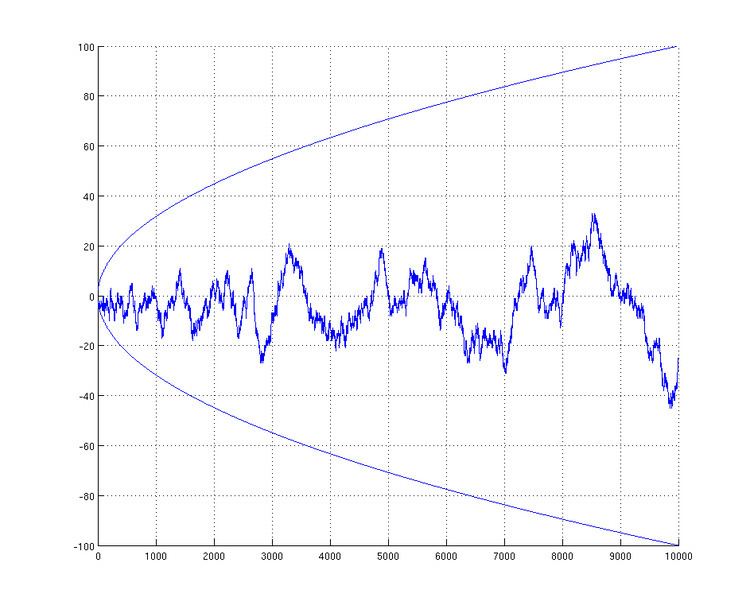 | ||
In mathematics, the Mertens conjecture is the false statement that the Mertens function M(n) is bounded by √n, which implies the Riemann hypothesis. It was conjectured by Thomas Joannes Stieltjes in an 1885 letter to Charles Hermite (reprinted in Stieltjes 1905) and Mertens (1897), and disproved by Odlyzko & te Riele (1985). It is a striking example of a mathematical proof contradicting a large amount of computational evidence in favor of a conjecture.
Contents
Definition
In number theory, we define the Mertens function as
where μ(k) is the Möbius function; the Mertens conjecture is that for all n > 1,
Disproof of the conjecture
Stieltjes claimed in 1885 to have proven a weaker result, namely that
In 1985, Andrew Odlyzko and Herman te Riele conditionally proved the Mertens conjecture false: indeed,
In 1979 Cohen and Dress found the largest known value of
In 2006, Kotnik and te Riele improved the upper bound and showed that there are infinitely many values of n for which m(n)>1.2184, but without giving any specific value for such an n. In 2016, Hurst made further improvements by showing
Connection to the Riemann hypothesis
The connection to the Riemann hypothesis is based on the Dirichlet series for the reciprocal of the Riemann zeta function,
valid in the region
and after integrating by parts, obtain the reciprocal of the zeta function as a Mellin transform
Using the Mellin inversion theorem we now can express M in terms of 1/ζ as
which is valid for 1 < σ < 2, and valid for 1/2 < σ < 2 on the Riemann hypothesis. From this, the Mellin transform integral must be convergent, and hence M(x) must be O(xe) for every exponent e greater than 1/2. From this it follows that
for all positive ε is equivalent to the Riemann hypothesis, which therefore would have followed from the stronger Mertens hypothesis, and follows from the hypothesis of Stieltjes that
